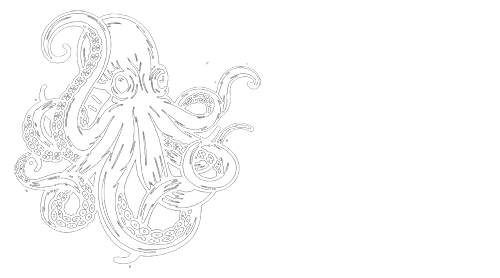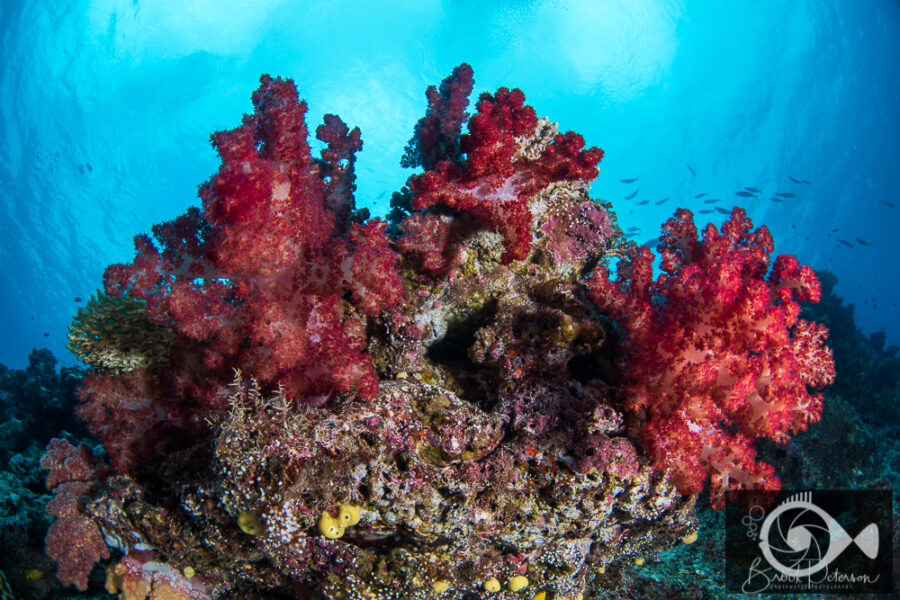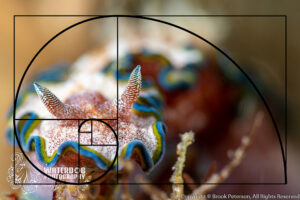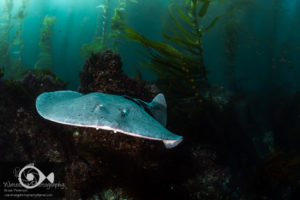
Variety of Corals in a circular fisheye frame
Although not really a zoom lens on a full frame camera (as is implied by the 8-15mm,) rather, it is an 8mm circular fisheye lens and a 15mm wide angle fisheye; in effect, two lenses in one. There is a vignette from about 14mm down to 9 or 10 that doesn’t quite form a full circle, so the “in-between” isn’t really usable. But, the lens can also be used on a crop sensor camera above 10mm where it will completely cover the frame. So on a crop sensor camera, it is a 10-15mm zoom lens. Below 10mm, there is a vignette, and it never reaches a full circle.
I had the opportunity to take this lens on location with me to Fiji. The sharpness and clarity of the lens can be seen in the spines of the soft corals. Although on a full frame camera I rarely shoot with an aperture under f/11, this image was shot at f/9 and is still quite clear.

Fish school over a soft coral reef in Fiji
For some, having a circular fisheye lens isn’t a draw at all. Others will rejoice at the versatility and freedom the lens gives them. In my book, having the ability to switch between circular fisheye and a regular diagonal image while under water is a big plus. I like to shoot circular fisheye, but I don’t want to devote an entire dive to it. Only a few subjects lend themselves to circular fisheye, and I would rather have the option of zooming my lens out when the time is right than spending my dive searching for that one special opportunity. 
The circular fisheye leaves a darker blue ring around the image which can’t be helped, but can be adjusted in post.
I found another perk in the form of available dome ports for the Nikon 8-15mm lens. The tiny Zen 100mm lens with removable hood works great with this lens on a full frame housing. It wasn’t a good fit with the Sigma 15mm so I had to use a larger dome port to accommodate that lens. Now I have the option of getting really close and in tight for close focus wide angle shots with this lens and port combo. The hood removes easily which makes it a great option for circular fisheye as well.

Scallops encrusted with strawberry anemones (Corynactus californica) cling to the support beams under the oil rig Eureka in Southern California
In my opinion, the Nikon 8-15mm lens is much better than the Sigma 15mm and the Tokina 10-17mm. For those who shoot with both full frame and crop sensor cameras, it can replace both lenses in addition to the Sigma 8mm circular fisheye lens. This makes it a valuable tool and a great buy replacing three lenses with just one. Have a look at the following images and judge for yourself, but I will definitely keep the Nikon 8-15mm lens in my camera bag.

A large Bull shark cruises the reef in search of food

Soft corals adorn a pinnacle in Fiji

A sea lion dips its head below the surface to look at the divers below

Rose Anemones dot the reef around San Miguel Island, California

A Garibaldi guards its nest on one of the supports under the oil rig, Eureka
Here is a quick tutorial on removing the dark blue “halo” around circular fisheye images using Adobe Lightroom.
Join me for a workshop! Travel to a great destination where you will have exclusive coaching on your underwater photography. Meet new people, network, try new techniques, and learn with the pros! Click on Travel and Workshops for more information!





